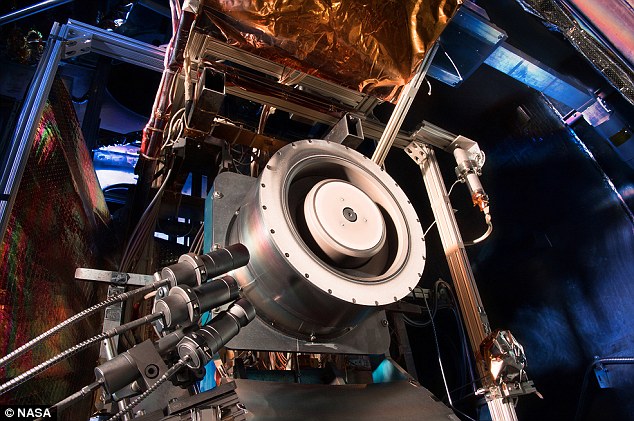Sending Man to Mars: NASA Develops Cutting Edge Technology, A Step Closer to Deep Space Exploration

NASA’s new thrust technology brings closer the dream of humanity landing on Mars. NASA engineers and Aerojet Rocketdyne scientists have been working together for the past three years in developing the Advanced Electric Propulsion System (AEPS).
The AEPS – Hall Thruster
The system is also known as a Hall Thruster, and it produces thrust by using electric and magnetic fields that ionize xenon, expelling ions.
This new system is safer, cleaner and more efficient than chemical rockets, but it comes at a cost: it has a lower thrust and acceleration. The CEO and president of Aerojet Rocketdyne, Eileen Drake, stated that:
“By staying on the cutting edge of propulsion technology, we have positioned ourselves for a major role not only in getting back to the Moon, but also in any future initiative to send people to Mars. AEPS is the vanguard for the next generation of deep space exploration and we’re thrilled to be at the mast.”
This technology was already used in helping satellites move in orbit around our planet.
However, the new technology is more powerful than current electric propulsion systems, and now Aerojet Rocketdyne is working on developing a 13-kilowatt Hall thruster string.
The system could efficiently convert power and produce minimal waste heat after being teste at NASA’s Glenn Research Center (Cleveland, Ohio). The team now has to finalize the design and to have it cleared for production after successfully passing the verification phase and critical design review (CDR).
Deep space exploration slowly becomes a possibility as the AEPS thrusters could be used for NASA’s Gateway lunar outpost and allow exploration of other space bodies like the Moon and Mars.
The new tech will in the future support deep space exploration using 50-kW class solar electric propulsion. Now, the most powerful Hall thruster in orbit uses 4.5 kilowatts.
0 comments